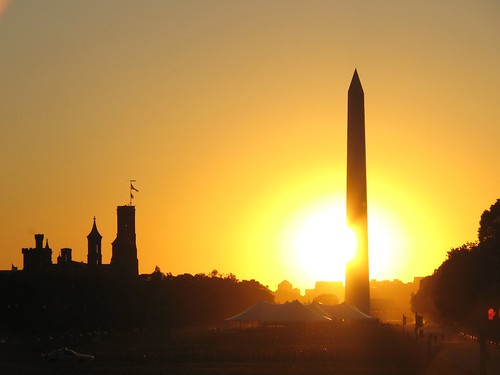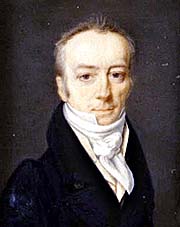|
|
|||||||
| What Does It Mean ? What does this all mean for the Ground Crew ? |
| View Poll Results: Should Giovonni: | |||
| Finish the story on this thread |
|
3 | 50.00% |
| Do not disclose the last chapter and epilogue |
|
3 | 50.00% |
| Voters: 6. You may not vote on this poll | |||
 |
|
|
Thread Tools | Display Modes |
|
|
|
|
#1 |
|
Avalon Senior Member
Join Date: Sep 2008
Location: within my heart
Posts: 1,209
|
A brief interlude~ Found this recently in the Washington Post~ FYI   Southwest~ of the Mall~ between the U.S. Capitol Building and the Washington Monument~ majestically sits the Smithsonian Castle.  An authentic Normandy style castle~ America's first Museum The Smithsonian Institution Discovering its many secrets Friday, November 13, 2009 What do you think of when you hear the words "the Smithsonian"? The National Museum of the American Indian? The merry-go-round on the Mall? The inappropriate use of government funds? What about: Illegitimate Englishman leaves the equivalent of $50 million to $100 million in his will to a place he had never visited and had no connection to? "There's a lot we don't know about James Smithson," guide John Heyob tells the group standing in front of Smithson's tomb as he gets ready to lead a tour of one of the Smithsonian Institution's most recognizable buildings.  The Smithsonian Castle: You see it in photos, you scurry past it on the way to the Air and Space Museum, you lunch in its garden in the summertime. But the castle itself is worth exploring, too. The most noteworthy item is, in fact, Smithson's tomb. Smithson died and was buried in Italy in 1829. His remains came to Washington in the early 1900s. There he lies, the reason these artifacts -- the Hope Diamond at the Museum of Natural History, the Star-Spangled Banner at the Museum of American History -- are all here in one place. To think that, in 1835, some members of Congress didn't want to accept his money. President Andrew Jackson wondered if it was legal to take it. The funds initially went to Smithson's nephew. The will stated that if the nephew died without children, the money would go to the United States. Six years after Smithson died, so did his childless nephew. Smithson's money came to the states in the form of 105 bags of gold, which were then melted down in Philadelphia. Those are some of the fun facts your guide will tell you. The castle houses pieces from 16 Smithsonian museums. (It's a good place to figure out where to go next.) You'll also see a model of the original design of the castle that was found in the attic in 1965 and is one of the oldest building models in the United States. A couple of impressive-looking chairs from the office of President Abraham Lincoln's secretary of war, Edwin Stanton, sit in Sherman Hall, the former library in the castle. Stop and catch Ben Stiller's very funny narration of the Smithsonian orientation film after the tour. Smithson's vague and laconic will instructed that his money be used "for the increase and diffusion of knowledge." By taking this 45-minute tour of the castle, you'll be doing just that. By Moira E. McLaughlin It is reported ~ but unverified that James Smithson was a Freemason Words from Peter Solomon (TLS): "This wonderous castle was America's first real science museum. It was a gift to America from a weathy Bristish scientist who, like our forefather, believed our fledgling country could become the land of enlightenment. He bequeathed to our forefathers a massive fortune and asked them to build at the core of our nation `an establishment for the increase and diffusion of knowledge." "James Smithson and our forefathers envisioned our great country to be a land of enlightenment...Their great Smithsonian Institution stands as a symbol of science and knowledge at the very core of America. it is a living, breathing, working tribute to our forefathers` dream of America~ a country founded on the principles of knowledge, wisdom, and science." "My friends don't get me wrong, our forefathers were deeply religious men, but they were Deists~ men who believed in God, but in a universal and open-minded way. The only religious ideal they put forth was religious freedom...America's forefathers had a vision of spiritually enlightened utopia, in which freedom of thought would replace the darkness of our outdated religious institutions. (TLS 406-7). Last edited by giovonni; 11-22-2009 at 04:57 PM. |
|
|

|
|
|
#2 |
|
I dont need a label !
Join Date: Sep 2008
Location: The Shire of Wilt
Posts: 2,889
|
Sainsburys are selling hard back copy of the lost symbol for £5
|
|
|

|
|
|
#3 |
|
Avalon Senior Member
Join Date: Sep 2008
Location: within my heart
Posts: 1,209
|
What is  is there a way to find it and know it? " I find it wonderous to note that throughout history, all of mankinds disparate philosophies have all concurred on one thing~ that a great enlightenment is coming. In every culture, in every era, in every corner of the world, the human dream has focused on the same exact concept~ the coming apotheosis of man...the impending transformation of our human minds into true potentiality. What could possibly explain such a synchronicity of beliefs? Truth Truth has power. And if we gravitate toward similar ideas, maybe we do so because those ideas are true...written deep within us. And when we hear the truth, even if we don't understand it, we feel that truth resonates within us... vibrating with our unconsious wisdom. Perhaps the truth is not learned by us, but rather, the truth is recalled...remembered...re-cognized...as that which is already inside us" (TLS 409). Last edited by giovonni; 11-22-2009 at 05:54 PM. |
|
|

|
 |
«
Previous Thread
|
Next Thread
»
|
|
All times are GMT. The time now is 01:53 PM.




 Hybrid Mode
Hybrid Mode
